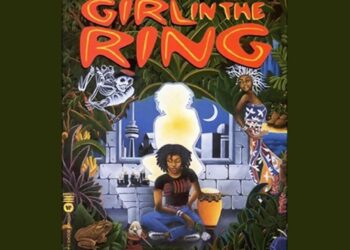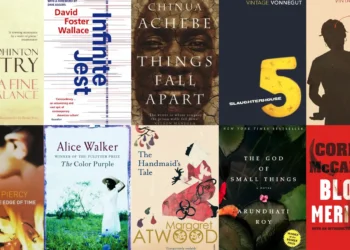50+ MCQs on Picaresque literature with Answers for UGC NET / SET Prepration
1. Who is considered the pioneer of the picaresque novel?
a) Daniel Defoe
b) Miguel de Cervantes
c) Henry Fielding
d) John Bunyan
2. The term “picaresque” originated from which language?
a) English
b) Spanish
c) French
d) Italian
3. Picaresque novels often feature a protagonist who is:
a) Wealthy and noble
b) Heroic and virtuous
c) A rogue and a wanderer
d) A scholar and philosopher
4. The picaresque narrative style is characterized by its:
a) Linear plot structure
b) Lack of episodic adventuresMCQs on Picaresque literature
c) Focus on psychological depth
d) Series of loosely connected episodes
5. Which of the following is a famous picaresque novel by Miguel de Cervantes?
a) “Don Quixote”
b) “Robinson Crusoe”MCQs on Picaresque literature
c) “Gulliver’s Travels”
d) “Pilgrim’s Progress”
6. The picaresque protagonist often comes from which social class?
a) Aristocracy
b) Clergy
c) Middle class
d) Lower class
7. Picaresque novels are often set in:
a) Rural areas
b) Small towns
c) Urban environments
d) Exotic lands
8. The picaresque genre emerged during which historical period?
a) The Renaissance
b) The Enlightenment
c) The Middle Ages
d) The Romantic era
9. Picaresque novels often critique:
a) Social hierarchies
b) Religious institutions
c) Political ideologies
d) All of the above
10. Which of the following is a famous picaresque novel by Henry Fielding?
a) “Moll Flanders”
b) “Joseph Andrews”
c) “Tom Jones”
d) “Clarissa”
11. The picaresque protagonist often navigates through:
a) A series of moral dilemmas
b) A quest for romantic love
c) A journey of self-discovery
d) A world of deception and trickery
12. Picaresque novels are often characterized by their:
a) Optimistic tone
b) Pessimistic worldview
c) Satirical humor
d) Romantic idealism
13. Which of the following is a common theme in picaresque literature?
a) Redemption and salvation
b) Justice and fairness
c) Survival and adaptation
d) None of the above
14. The term “picaro” refers to:
a) A nobleman
b) A clergyman
c) A rogue or a rascal
d) A scholar or a philosopher
15. Which of the following is a famous picaresque novel by Alain-René Lesage?
a) “Don Quixote”
b) “Gil Blas”
c) “Robinson Crusoe”
d) “Pilgrim’s Progress”
16. Picaresque novels often employ which narrative perspective?
a) First-person
b) Second-person
c) Third-person omniscient
d) Third-person limited
17. The picaresque protagonist often engages in:
a) Heroic deeds
b) Romantic pursuitsMCQs on Picaresque literature
c) Cunning and deception
d) Spiritual enlightenment
Also Read-
50+ MCQs on Memoirs with Answers for UGC NET / SET Prepration
50+ MCQs on Magic Realism with Answers for UGC NET / SET Prepration
50+ MCQs on Gothic literature with Answers for UGC NET / SET Prepration
18. Picaresque novels are often associated with which literary tradition?
a) Realism
b) RomanticismMCQs on Picaresque literature
c) Naturalism
d) Postmodernism
19. The term “rogue literature” is often used interchangeably with:
a) Picaresque literature
b) Epic poetry
c) Tragic drama
d) None of the aboveMCQs on Picaresque literature
20. Who is considered the author of the first English picaresque novel?
a) Daniel Defoe
b) Henry Fielding
c) Tobias Smollett
d) Laurence Sterne
21. Picaresque novels often explore the theme of:
a) Betrayal and loyalty
b) Wealth and poverty
c) Love and marriage
d) All of the above
22. The picaresque genre is often characterized by its:
a) Fixed narrative structure
b) Lack of character development
c) Social realism
d) Dynamic and episodic nature
23. Which of the following is a famous picaresque novel by Tobias Smollett?
a) “Pamela”
b) “Robinson Crusoe”
c) “Tom Jones”
d) “Clarissa”
24. Picaresque novels often feature a protagonist who is:
a) Respected and admired
b) Morally upright
c) Unconventional and rebellious
d) A leader and authority figure
25. The picaresque genre is often associated with which literary movement?
a) The Enlightenment
b) Romanticism
c) Modernism
d) Postcolonialism
26. Picaresque novels often highlight the protagonist’s:
a) Physical beauty
b) Moral integrity
c) Intellectual prowess
d) Survival skills and resourcefulness
27. Which of the following is a famous picaresque novel by Miguel de Cervantes?
a) “Tom Jones”
b) “Clarissa”
c) “Don Quixote”
d) “Pamela”
28. Picaresque novels often satirize:
a) Religious hypocrisy
b) Political corruption
c) Social conventions
d) All of the above
29. The picaresque genre is often associated with which cultural context?
a) Spanish
b) Italian
c) French
d) English
30. Who is considered the author of the first Spanish picaresque novel?
a) Miguel de Cervantes
b) Mateo Aleman
c) Henry Fielding
d) Daniel Defoe
31. Picaresque novels often employ which narrative technique?
a) Flashbacks
b) Stream of consciousness
c) Linear storytellingMCQs on Picaresque literature
d) None of the above
32. Which of the following is a famous picaresque novel by Thomas Nashe?
a) “Don Quixote”
b) “The Unfortunate Traveller”MCQs on Picaresque literature
c) “Robinson Crusoe”
d) “Gulliver’s Travels”
33. The picaresque protagonist often serves as a:
a) Symbol of virtue
b) Moral compass
c) Social critic
d) None of the above
34. Picaresque novels often feature a protagonist who is:
a) Wealthy and powerful
b) A victim of circumstancesMCQs on Picaresque literature
c) Morally righteous
d) A romantic hero
35. Which of the following is a common setting in picaresque literature?
a) Courtrooms and legal institutions
b) Prisons and dungeons
c) High society events
d) None of the above
36. Who is considered the author of the first French picaresque novel?
a) Miguel de Cervantes
b) Mateo Aleman
c) Alain-René Lesage
d) Daniel Defoe
37. Picaresque novels often explore the theme of:
a) Alienation and isolation
b) Social mobility
c) Class struggle
d) All of the above
38. The term “picaresque” is derived from the Spanish word “pícaro,” which means:
a) Heroic
b) Villainous
c) Mischievous
d) Humble
39. Picaresque novels often feature a protagonist who is:
a) Noble by birth
b) Destined for greatness
c) A trickster and a scoundrel
d) A tragic hero
40. Which of the following is a famous picaresque novel by Voltaire?
a) “Candide”
b) “Don Quixote”
c) “Robinson Crusoe”
d) “Gulliver’s Travels”
41. Picaresque novels often explore the theme of:
a) Heroism and bravery
b) Social injustice and inequality
c) Romantic love and passion
d) None of the above
42. Who is considered the author of the first English picaresque novel?
a) Miguel de Cervantes
b) Mateo AlemanMCQs on Picaresque literature
c) Daniel Defoe
d) Henry Fielding
43. Picaresque novels often employ which narrative technique?
a) Multiple points of view
b) Chronological order
c) Linear storytelling
d) None of the above
44. The picaresque protagonist often engages in:
a) Religious pursuits
b) Romantic relationships
c) Various jobs and occupations
d) Intellectual pursuits
45. Which of the following is a common theme in picaresque literature?
a) Nature and the wilderness
b) The search for immortality
c) The journey of self-discovery
d) None of the above
46. Picaresque novels often critique:
a) Traditional values and institutions
b) Scientific progress and enlightenment
c) Romantic ideals and fantasies
d) None of the above
47. Who is considered the author of the first German picaresque novel?
a) Miguel de Cervantes
b) Mateo Aleman
c) Johann Wolfgang von Goethe
d) Daniel Defoe
48. Picaresque novels often feature a protagonist who is:
a) Loyal and trustworthy
b) Cunning and resourceful
c) Naive and innocent
d) None of the above
49. Which of the following is a common motif in picaresque literature?
a) The quest for revenge
b) The pursuit of wealth
c) The search for spiritual enlightenment
d) None of the above
50. Picaresque novels often employ which narrative device to frame the story?
a) The frame tale
b) The flashback
c) The epistolary form
d) The stream of consciousness
Answer
1. b) Miguel de Cervantes
2. b) Spanish
3. c) A rogue and a wanderer
4. d) Series of loosely connected episodesMCQs on Picaresque literature
5. a) “Don Quixote”
6. d) Lower class
7. c) Urban environmentsMCQs on Picaresque literature
8. a) The RenaissanceMCQs on Picaresque literature
9. d) All of the above
10. c) “Tom Jones”MCQs on Picaresque literature
11. d) A world of deception and trickery
12. c) Satirical humorMCQs on Picaresque literature
13. c) Survival and adaptation
14. c) A rogue or a rascal
15. b) “Gil Blas”MCQs on Picaresque literature
16. a) First-person
17. c) Cunning and deceptionMCQs on Picaresque literature
18. a) Realism
19. a) Picaresque literature
20. a) Daniel Defoe
21. c) Love and marriage
22. d) Dynamic and episodic nature
23. c) “Tom Jones”
24. c) Unconventional and rebellious
25. a) The Enlightenment
26. d) Survival skills and resourcefulness
27. c) “Don Quixote”
28. d) All of the above
29. a) Spanish
30. b) Mateo Aleman
31. a) Flashbacks
32. b) “The Unfortunate Traveller”
33. c) Social critic
34. b) A victim of circumstances
35. b) Prisons and dungeons
36. c) Alain-René Lesage
37. d) All of the above
38. c) Mischievous
39. c) A trickster and a scoundrel
40. a) “Candide”
41. b) Social injustice and inequality
42. c) Daniel Defoe
43. d) None of the above
44. c) Various jobs and occupations
45. c) The journey of self-discovery
46. a) Traditional values and institutions
47. c) Johann Wolfgang von Goethe
48. b) Cunning and resourceful
49. d) None of the above
50. a) The frame tale
















